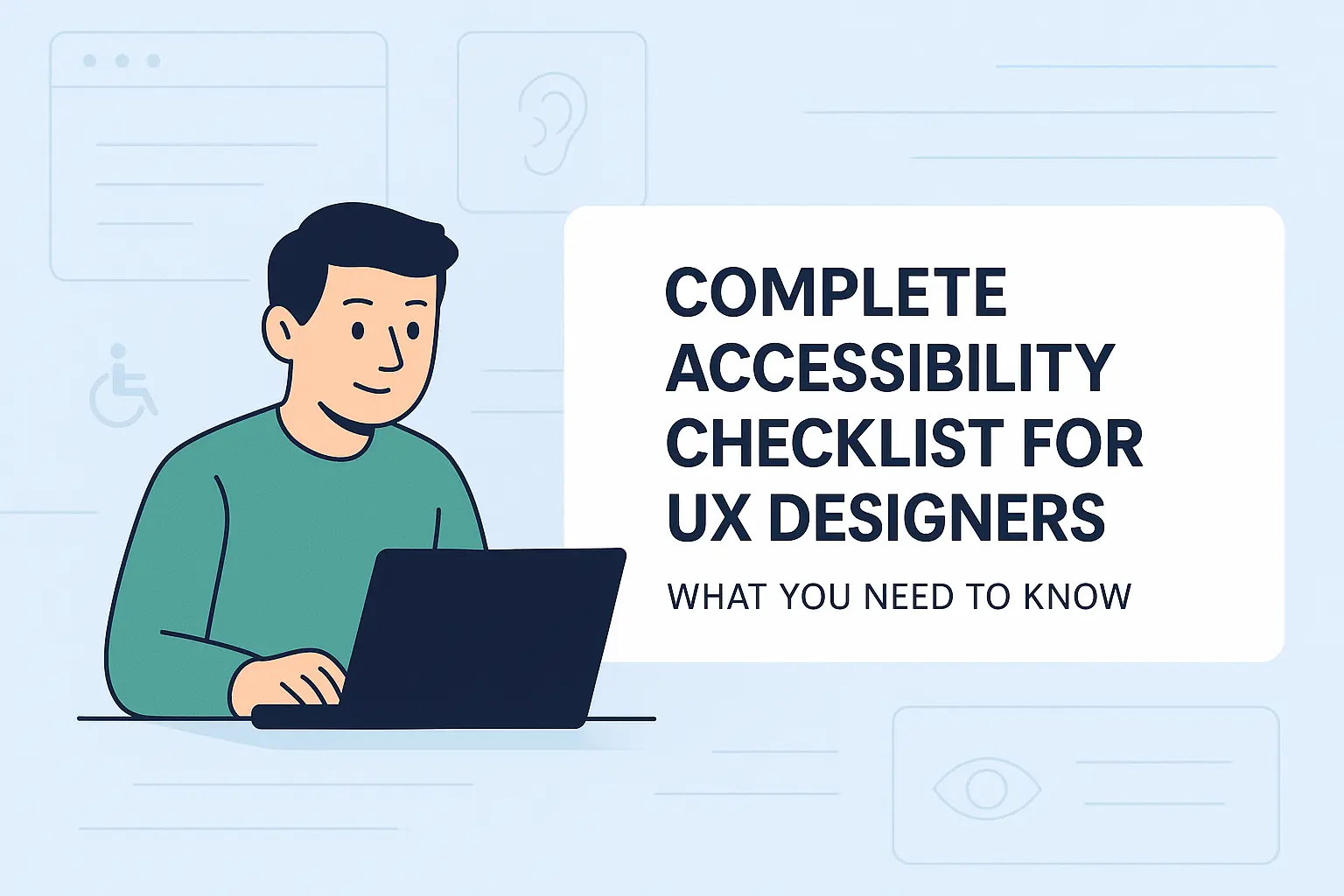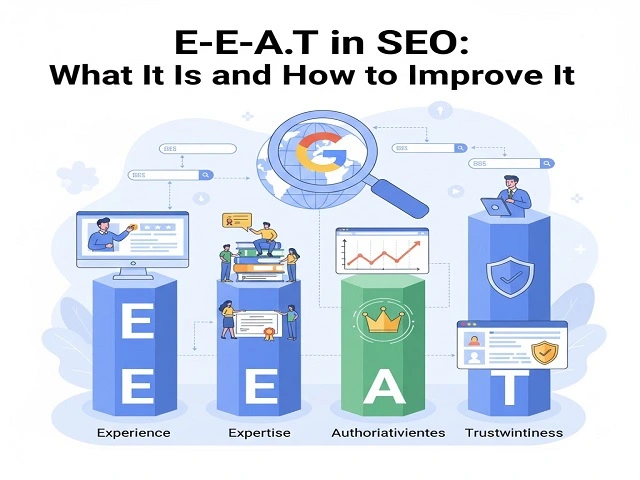A good ux accessibility checklist helps designers create digital experiences that everyone can use. This guide breaks down what accessibility means in ux design and shares a clear checklist to follow in your projects.
Accessibility is not just a box to tick; it’s a core part of good user experience design. When websites or apps aren’t designed with accessibility in mind, they exclude people with disabilities and make the experience harder for everyone.
The truth is, accessibility isn’t an optional extra in the ux design process. It’s an essential part of building digital products that are inclusive, usable, and future-proof. That’s why every designer should follow an accessibility checklist for designers to make sure no one is left out.
Understanding UX Design and Accessibility
Before diving into the details, let’s revisit ux design meaning. At its core, UX (user experience) is about how people interact with a product, whether it’s a website, an app, or even a device. Good UX makes that interaction smooth, intuitive, and satisfying.
Accessibility is simply making sure that experience works for everyone including people who may have visual, hearing, motor, or cognitive challenges. When accessibility is built into user experience design, you’re not only serving users with disabilities; you’re improving usability for all.
Consider a website accessibility checklist as an essential part of your design toolkit. Just like wireframes or prototypes, it ensures the final product is user-friendly, no matter who’s using it.
The Complete UX Accessibility Checklist
Here’s a practical ux accessibility checklist you can follow to make your designs more inclusive. Each step might look small on its own, but together they shape the overall user experience.
- Provide text alternatives for images: Every image should have alt text so that screen readers can describe it to users who are visually impaired.
- Use strong color contrast: Text should stand out against the background. This makes content easier to read for everyone, not just those with low vision.
- Ensure keyboard navigation: Users should be able to move around your site using only the keyboard, without needing a mouse.
- Support scalable fonts: Allow users to resize text without breaking the layout. This is key for readability.
- Add captions and transcripts to videos: This helps people with hearing impairments, as well as users who watch without sound.
- Keep layouts simple and consistent: A clean design reduces confusion and ensures smooth navigation.
- Design for screen reader compatibility: Ensure that interactive elements, such as buttons and menus, are correctly labeled.
- Label forms and inputs clearly and provide instructions and error messages that are easy to understand.
This accessibility checklist applies to more than one project stage. It should guide you throughout the journey, from research and design to testing and launch. When followed carefully, this accessibility checklist for designers can transform how inclusive your work is.
How Accessibility Fits into the UX Design Process
Many teams view accessibility as a last-minute add-on. But the best results come when it’s part of the ux design process from day one.
Start by considering accessibility in your research phase — talk to a diverse range of users, including those with disabilities. Carry it into wireframes by checking contrast and text sizes early. During testing, use accessibility tools and real user feedback. By the time you launch, you’ll have a product that works for everyone.
Making accessibility a habit improves user experience for the widest audience possible, and it reduces the risk of costly redesigns later.
Why Accessibility Is Good for Business
Accessibility isn’t only about compliance or being “nice.” It’s also smart business. A site that follows a solid website accessibility checklist works better for all users, allowing more people to engage with your brand.
Search engines also reward accessible sites because they’re easier to crawl and understand. That means better visibility online. When you combine accessibility with strong user experience design, you’re not only reaching more customers you’re keeping them loyal.
Common Mistakes Designers Make
Even experienced designers can overlook accessibility. Here are some of the most common slip-ups:
- Ignoring contrast ratios and making text too light to read.
- Skipping alt text for images.
- Designing only for desktop without testing on mobile.
- Forgetting about users who rely on screen readers.
Using a structured ux accessibility checklist is the best way to avoid these mistakes and build products that truly deliver a good user experience.
Designing with Everything in Mind
Accessibility is not separate from ux design — it’s a natural part of it. A strong accessibility checklist ensures your digital products serve every type of user, making user experience design more complete and effective. By following a clear ux accessibility checklist, you create websites and apps that are easier, more inclusive, and ultimately more successful.
At Savit Interactive, we understand that inclusive design is good design. Our team specializes in web design and development, ui ux design, user experience, and building solutions that align with a full website accessibility checklist. We bring accessibility into the ux design process from the start, ensuring your brand reaches more people and delivers better results. Let’s work together to design digital experiences that truly include everyone.



